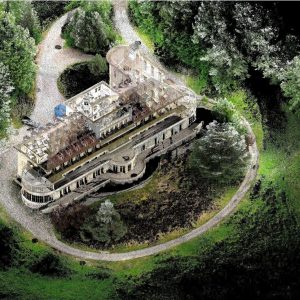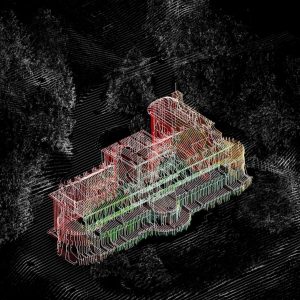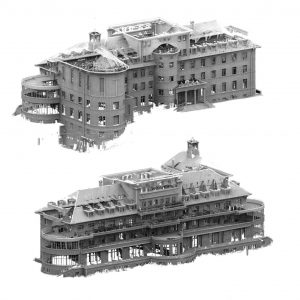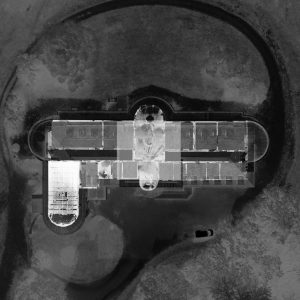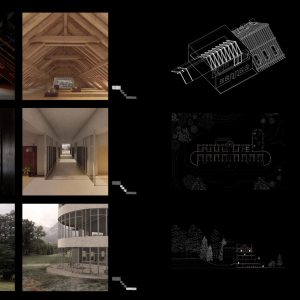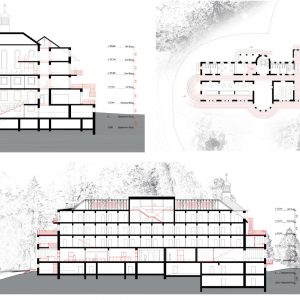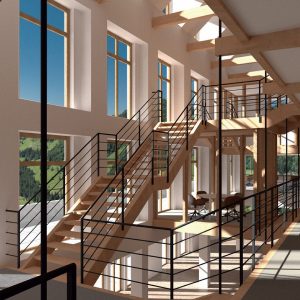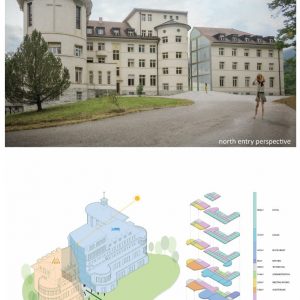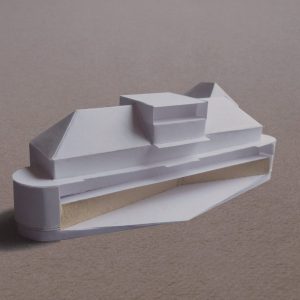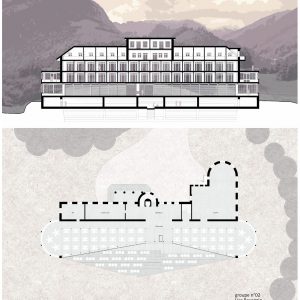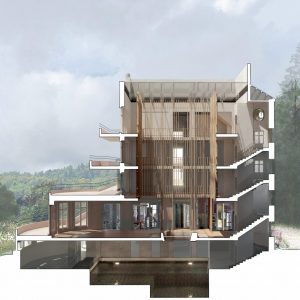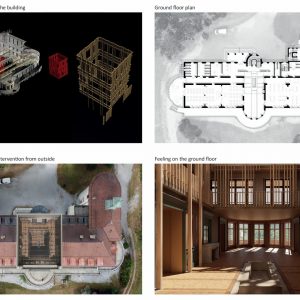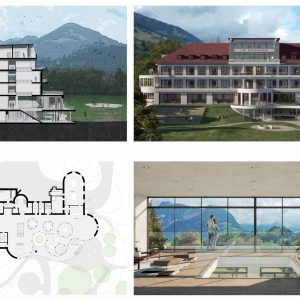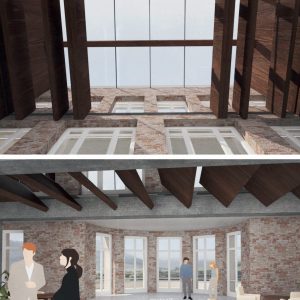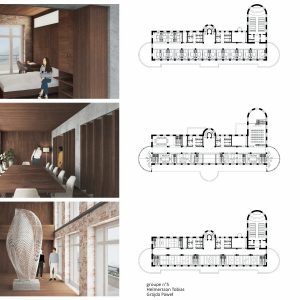HISTORY
Currently abandoned, the preventorium Le Rosaire was built in the 1930s and hosted 100 beds for women and children suffering from tuberculosis. Located in Sciernes d’Albeuve, this remote location offered a remarquable air quality and a scenic landscape. It later became a center for swiss-german women to learn French in the 1960s and subsequently became a language school and recreation center in the 1990s. “Le Rosaire” was officially closed in 2014 due to nonconformity to fire regulations. Today, the preventorium is protected and maintains a strong cultural heritage in the region.
CONTEXT
Until now, this restful however remote building celebrated health, hygiene and learning, without unnecessary luxury, but failed to maintain its activities. However, this 3250m2 complex benefit from a direct proximity to a M.O.B station and could ensure its touristic recognition.
The imposing building was designed by architect Guido Meyer with the objective of bringing as much light as possible into the rooms of convalescents. Long cantilevered terraces are facing south with views of the surrounding peaks such as the Rochers de Naye and Dent de Lys. The structure is made of brick and reinforced concrete completed by a wooden roof. The total volume of 16,000 cubic meters also includes a remarkable art deco chapel that has remained in good condition.
AIMS
The atelier proposed to investigate the potential reuse of this historical landmark, notably through architecture as a civil engagement and construction as a performance.
PROGRAM
Relating to the potential of the site and the reuse of built heritage, “Le Rosaire” is thought to host a convention center, benefitting from an important accessibility by train and peaceful surroundings. Alternative programs can be envisioned if adequately motivated.
TOOLS
Studio Weinand investigates the potential of digital tools to better link early-stage design with late-stage construction.
Through different workshops and lectures, students were introduced to digital fabrication tools, parametric interfaces and holistic thinking methods. Laser scanning techniques were also used to get a detailed point cloud of the chosen site and challenge classical project representations. When working on the transformation of the cultural heritage, this allowed for a better understanding of existing spaces.
In addition, as the global pandemic forced the teaching of the project to be done remotely and virtually, having a digital twin of the building helped maintaining a bound to the reality of the existing site.
The outcome of this studio was a diversified production of very rich projects. Students projects are also available on Miro.
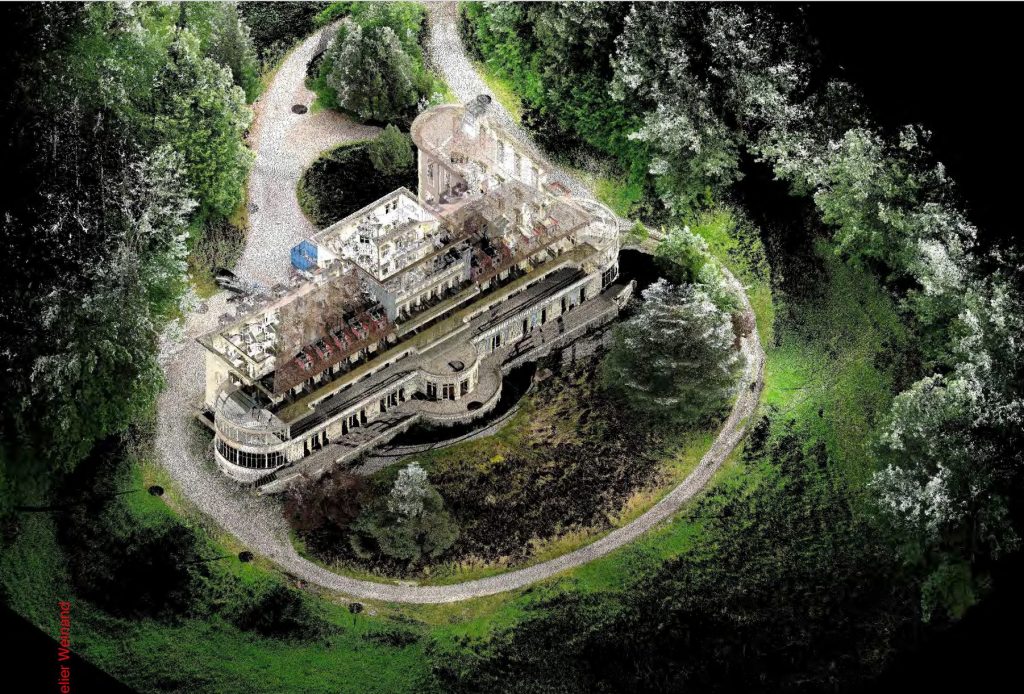
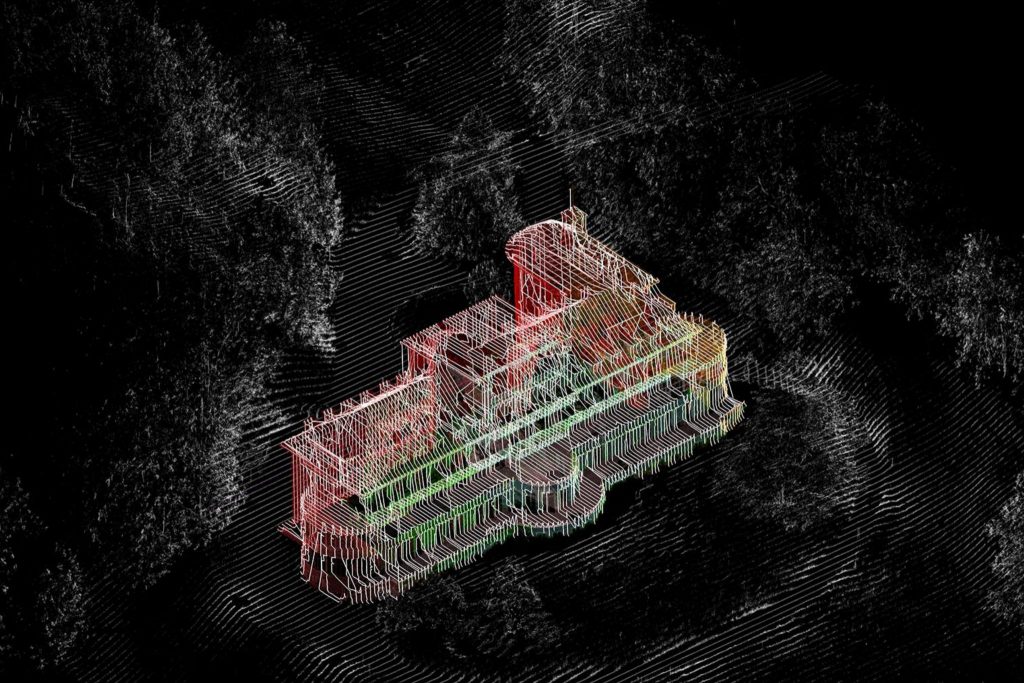
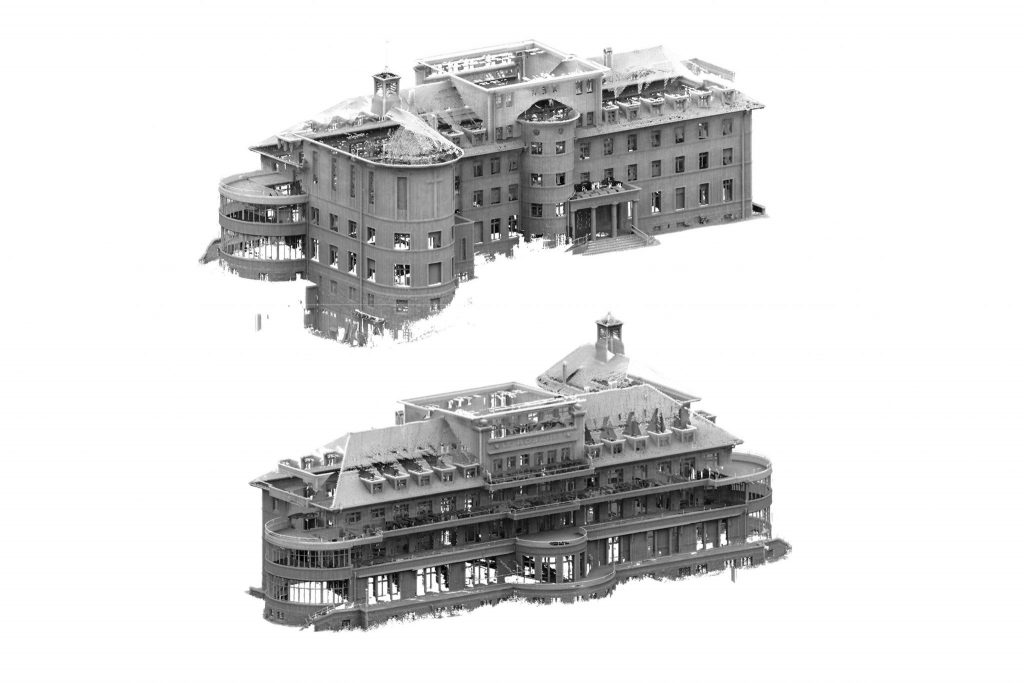
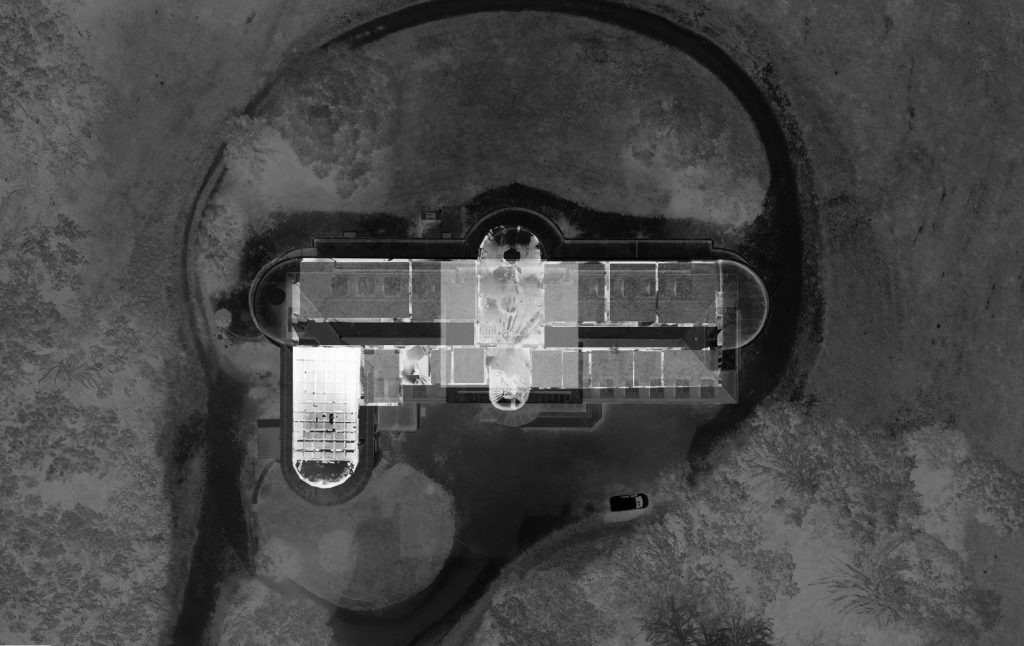
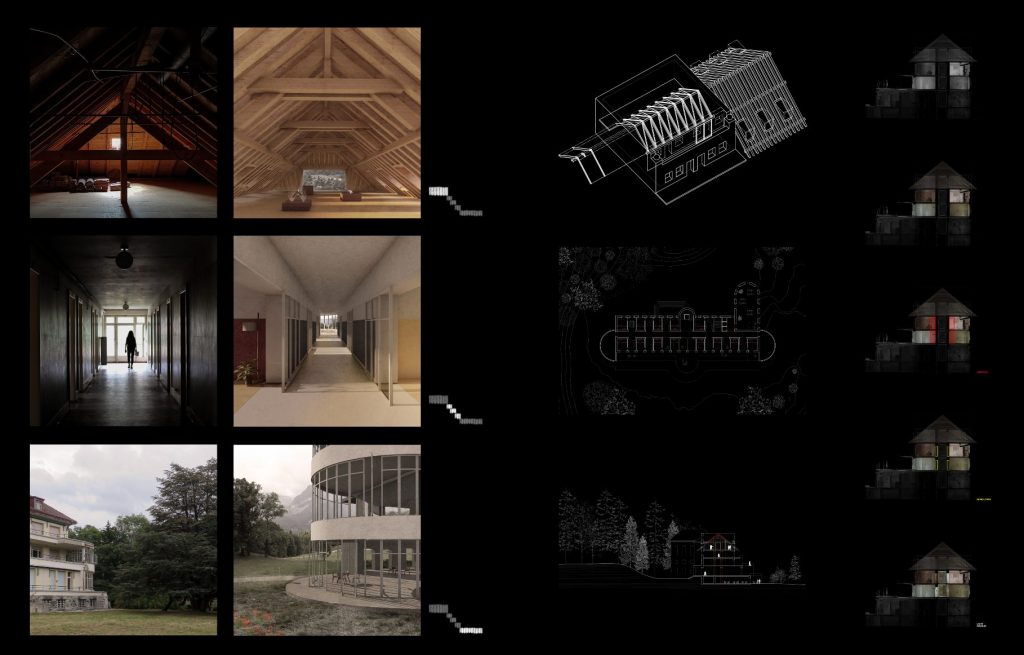
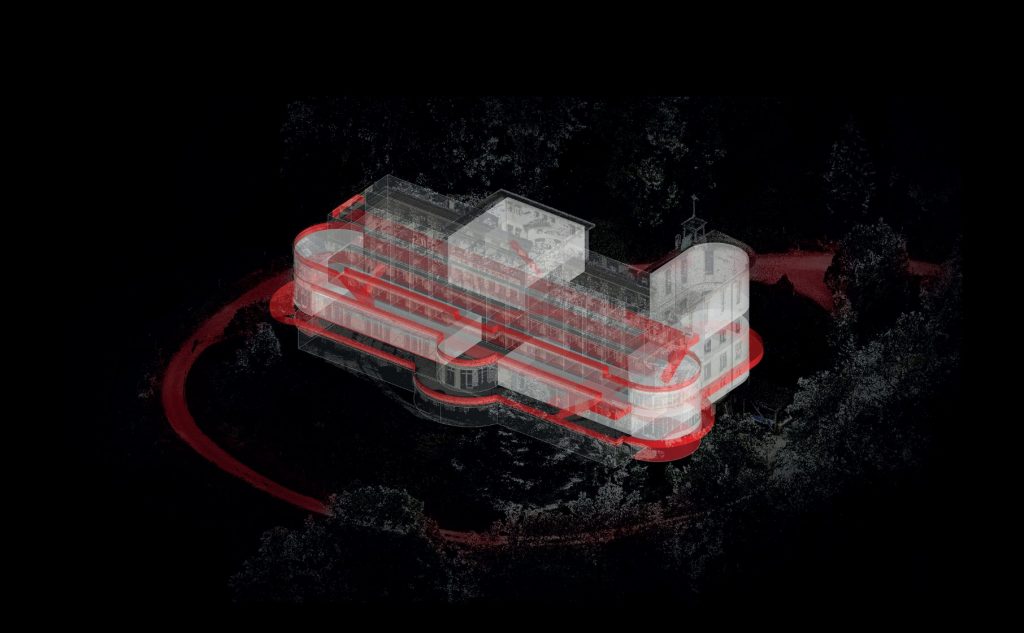
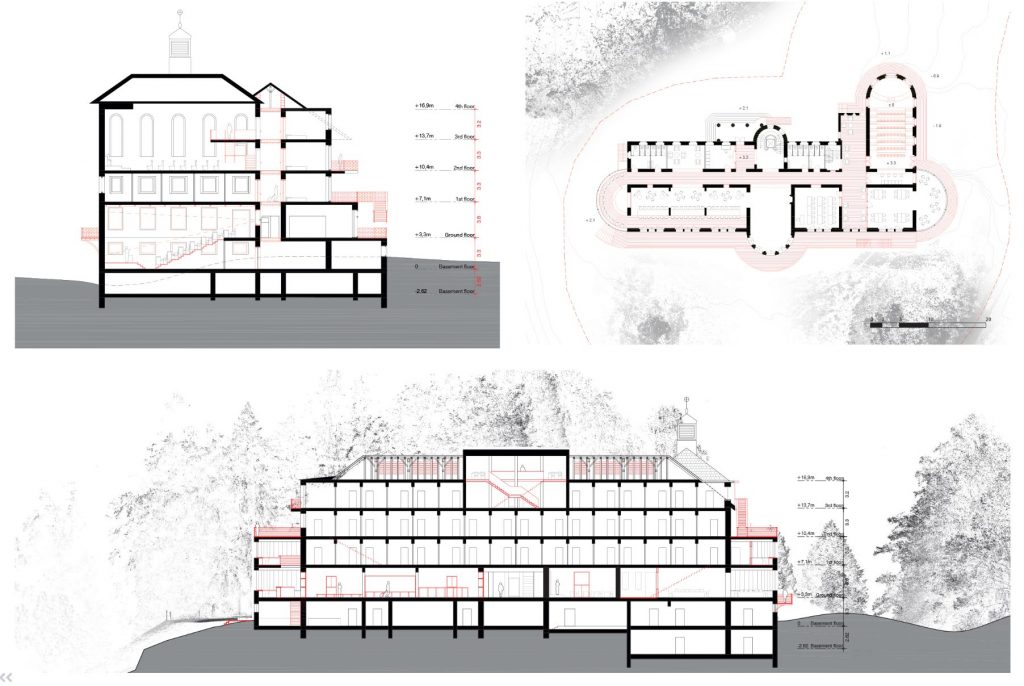
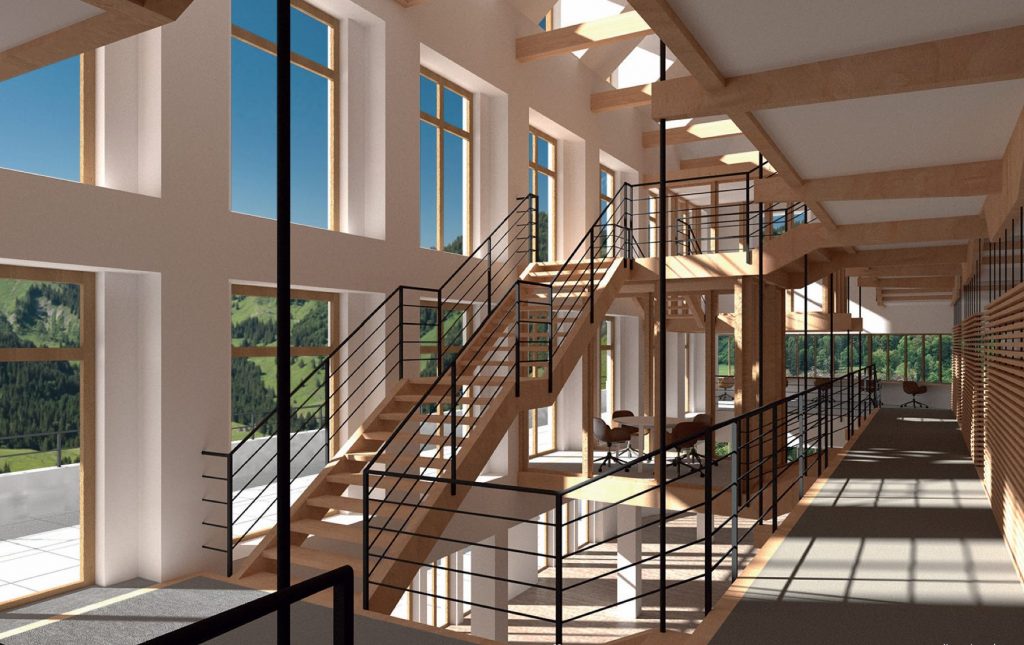
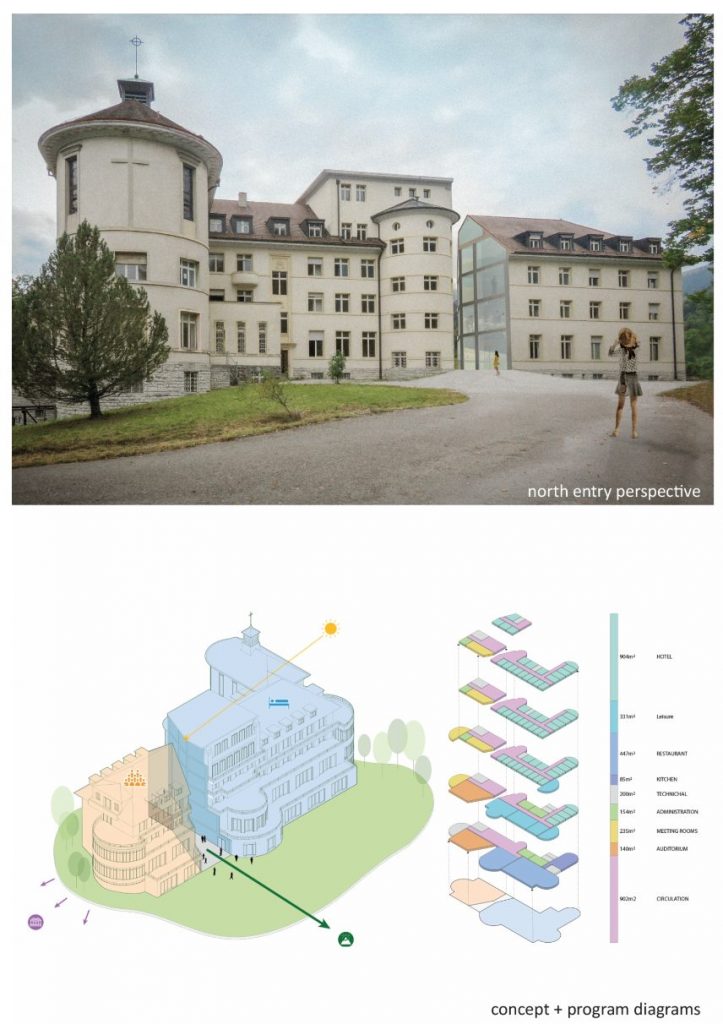
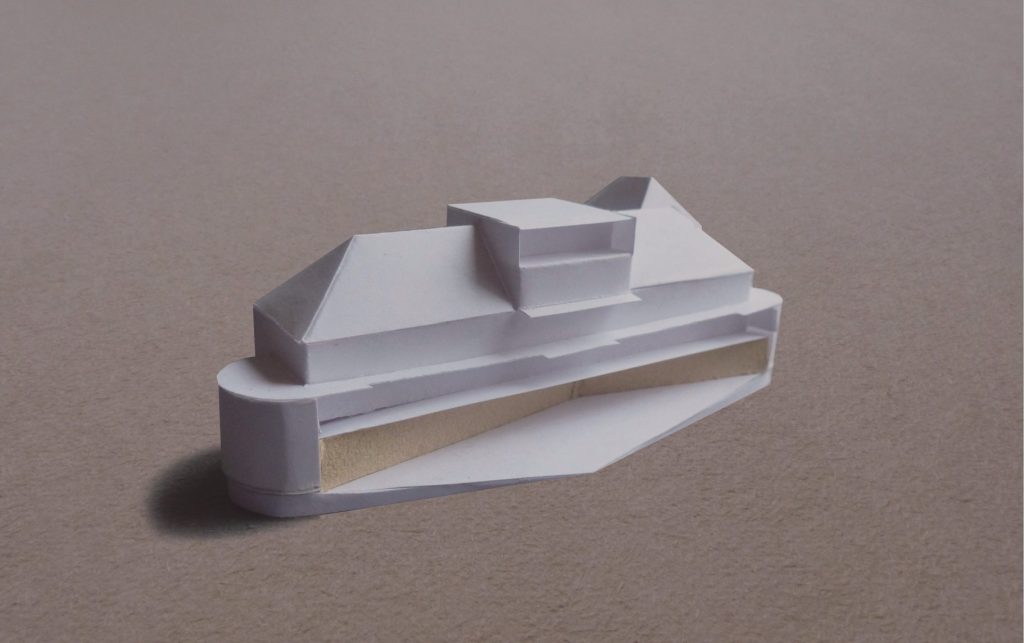
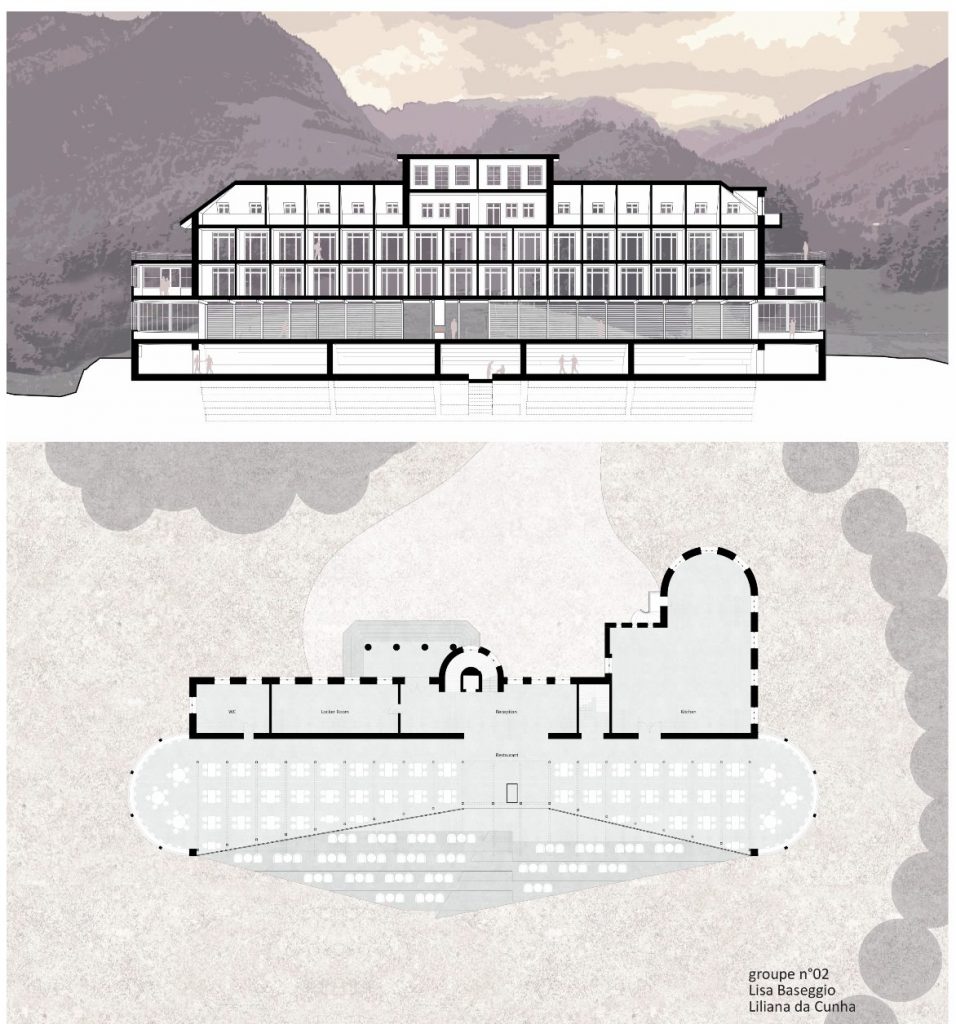
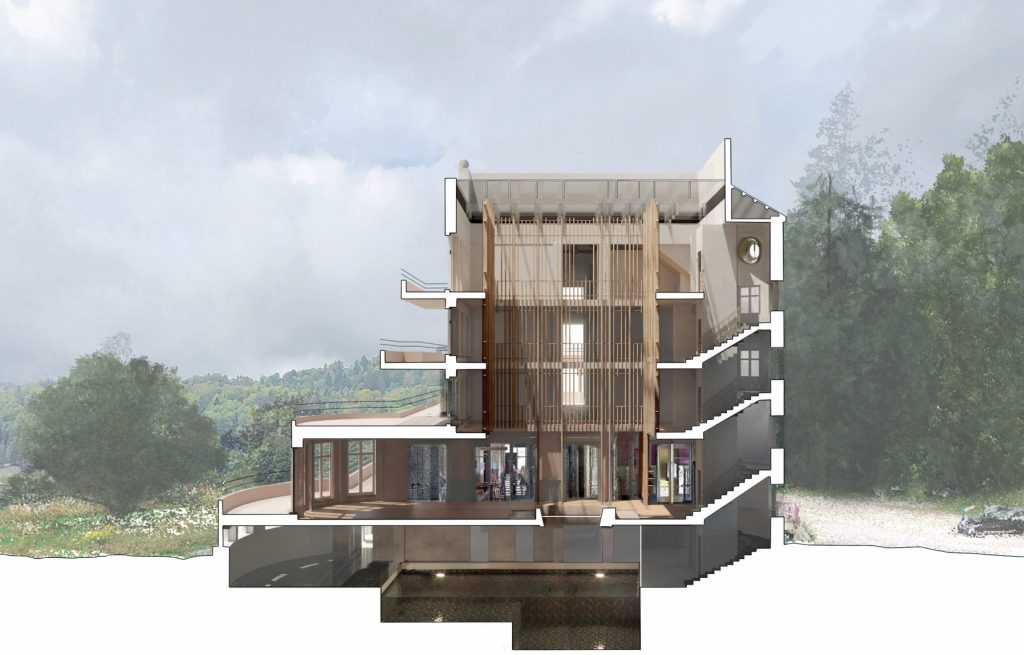
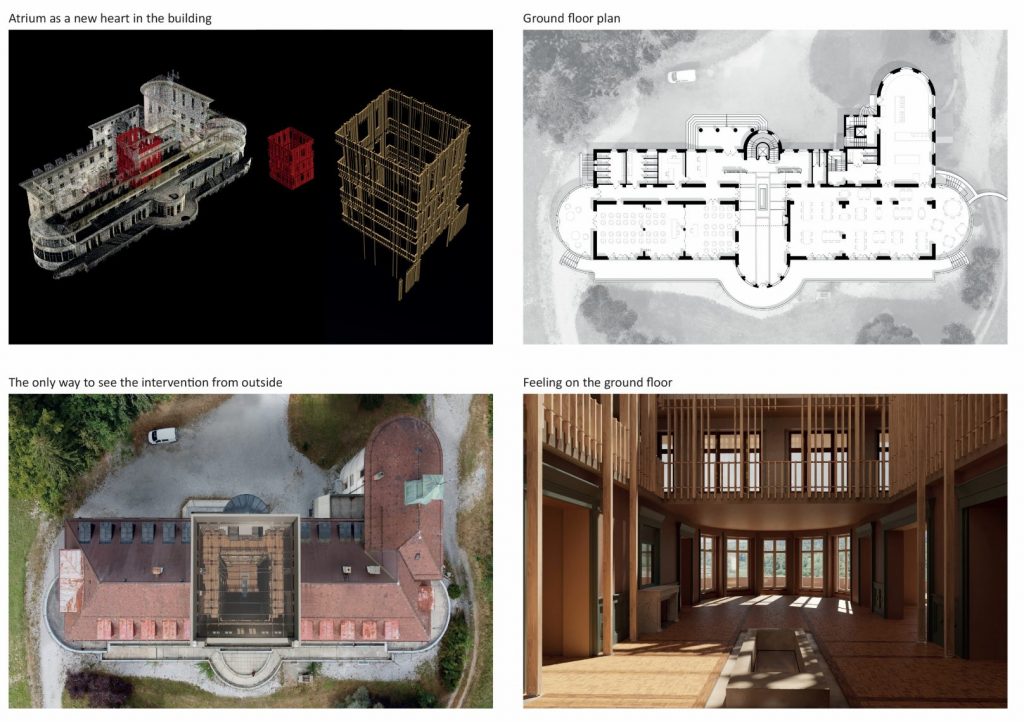
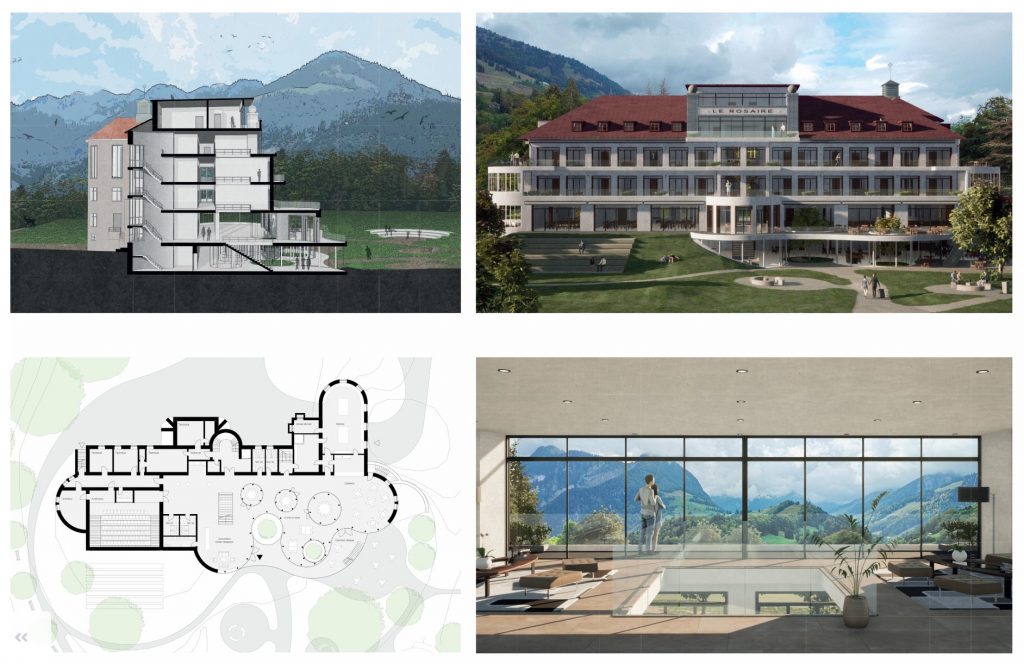
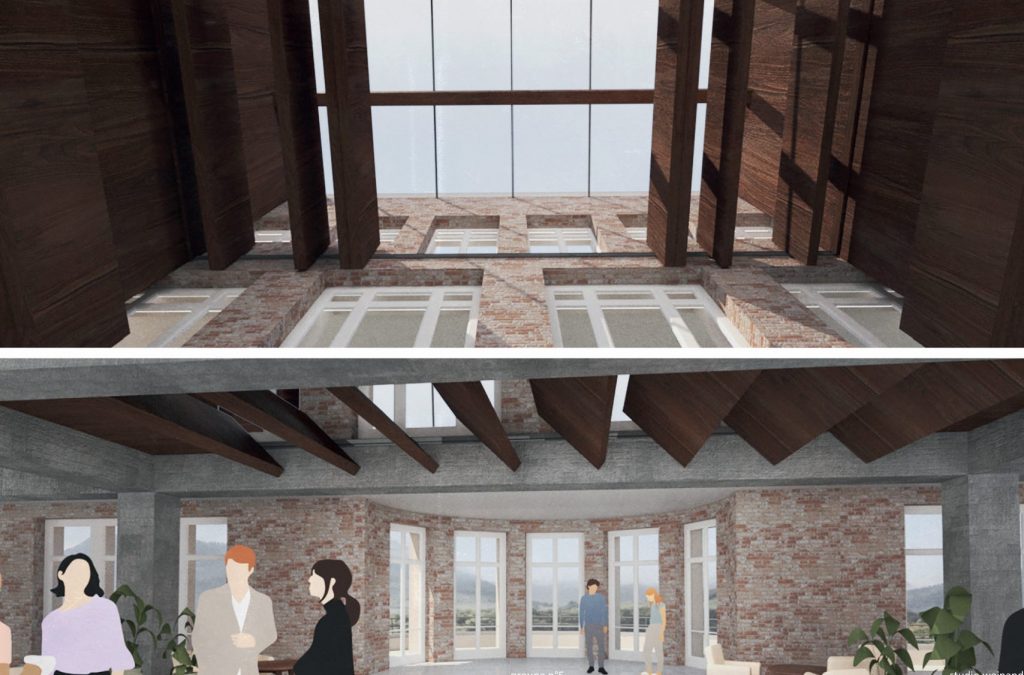
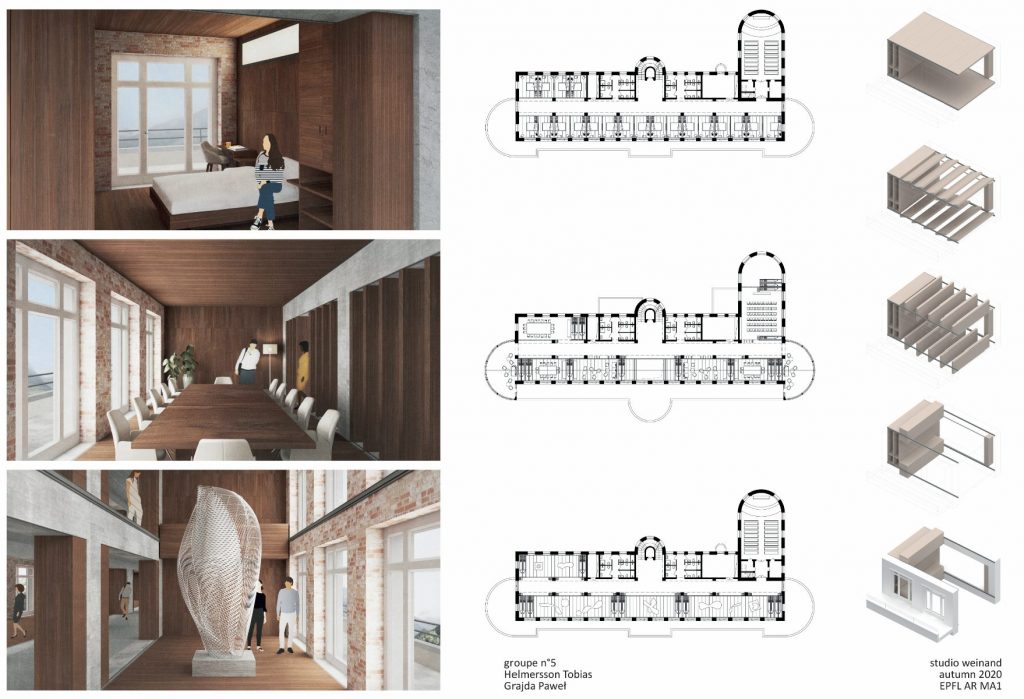
Team
Prof. : Yves Weinand
Assist. : Petras Vestartas, Nicolas Rogeau
Guests : Prof. Niels Martin Laersen (Aarhus School of Architecture), Prof. Franz Graf (EPFL)
Students
Lisa Baseggio, Raphaël Boscarato, Matteo Ciccarelli, Alicia Crespo Montañes, Liliana Da Cunha, Pawel Grajda, Tobias Helmersso, Gleb Kolesnikov, Grégory Kramer, Lauriane Lagrange, Pierrot Lankry, Carla López Arnau, Simone Morelli, Rida Perret, Jacques Schmid, Morgan Simon
